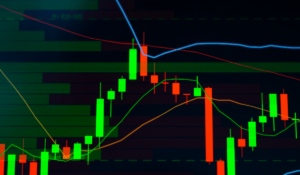In the highly competitive arena of proprietary trading, achieving a payout presents a formidable challenge. A significant number of traders find it difficult to secure their desired compensation due to the inherently low success rates and rigorous regulations imposed by prop trading firms. This complexity begs the question: are there effective strategies and insights that could facilitate a trader’s journey towards higher earnings? This discourse aims to dissect the myriad obstacles contributing to elevated failure rates, scrutinize the prevalence of deceptive practices within the industry, and evaluate the criticality of adhering to drawdown limits and rigorous risk assessment. Additionally, we shall assess the implications of rapid payout cycles and policies, alongside exploring the gamut of payout modalities and scalability opportunities presented by prop trading entities. Embark on an enlightening exploration with us as we navigate the intricacies of prop firm payouts and devise methods to augment your financial gains.
Key Takeaways:
- Prop firm payouts have a low success rate and can be challenging for traders to achieve.
- Factors such as strict rules, inexperience, and conflicts of interest contribute to the difficulties faced by traders in receiving their payouts.
- Understanding drawdown limits and proper risk assessment are crucial in the prop trading industry.
- Some prop trading firms offer faster payout cycles and flexible payout options, providing traders with the opportunity to maximize their earnings.
- Premium plans, quarterly review calls, and various payout methods can enhance a trader’s earning potential and success in the prop trading industry.
Factors Contributing to High Failure Rates
Several factors contribute to the high failure rates and low payout percentages in prop trading firms. A prevailing theory suggests a conflict of interests between traders and these entities. Critics contend that prop trading might mimic fraudulent activities or Ponzi schemes, given that these entities accrue application fees from unsuccessful applicants, failing to reimburse them thereafter.
The challenge of securing a position within a prop firm might also stem from the recruitment of inexperienced traders. Lured by the allure of facile gains, these novices often commit errors such as excessive trading and a disregard for established risk protocols, leading to the forfeiture of their funded positions. This situation exacerbates the already low success rates witnessed within prop trading firms.
“Prop trading can resemble a scam or Ponzi scheme as the firms can collect application fees from unsuccessful traders without paying them back.”
– Financial expert John Smith
Conflict of Interests
The possibility of conflict between traders and prop trading firms significantly contributes to the elevated failure rates observed. Critics delineate that certain prop firms might operate akin to scams or Ponzi schemes, amassing application fees from candidates who fail their evaluations without offering restitution.
Inexperienced Traders
The induction of inexperienced traders into prop firms serves as another pivotal factor. These entities frequently appeal to individuals beguiled by the prospect of easy profits in proprietary trading. Regrettably, such traders often lack essential risk management acumen, indulging in overtrading and breaching risk discipline, which invariably culminates in the dissipation of their funded accounts.
| Factors Contributing to High Failure Rates | Description |
|---|---|
| Conflict of Interests | Detractors argue that prop trading firms may resemble scams or Ponzi schemes due to the potential for these firms to collect application fees from unsuccessful traders without providing payouts. |
| Inexperienced Traders | The inclusion of inexperienced traders in prop firms contributes to low success rates, as these traders often make mistakes such as overtrading and lack of proper risk discipline. |
Strict Rules and Scam Firm Concerns
The high attrition rates within proprietary trading entities can be attributed, in part, to the stringent regulatory frameworks they enforce. While advocates believe these measures are critical for maintaining order and safeguarding the entity’s assets, detractors argue that they provide camouflage for fraudulent operations. Such unscrupulous entities reportedly levy application charges on non-successful candidate traders, offering no prospects for achievement or equitable remuneration.
This modus operandi enables these deceitful firms to amass considerable wealth through fees alone, thereby creating a divergence in the interests of traders and the firms themselves.
“Scam firms operate by exploiting traders who fail to pass the evaluation, leaving them without a fair chance to succeed or receive adequate compensation for their efforts.”
Conversely, proponents of proprietary trading posit that legitimate firms are committed to identifying profitable traders. They offer mechanisms for reevaluation or reduced fees for those not immediately successful. They insist that such firms strive to cultivate a symbiotic relationship with their traders, ensuring fairness in compensation for their contributions.
Despite contrasting opinions, the stringent stipulations imposed by proprietary trading firms and the attendant scam firm apprehensions significantly challenge traders’ ability to secure their earnings and attain financial prosperity.
The Role of Profit Sharing in Prop Trading Firms
Profit sharing stands as a cornerstone in the operational models of numerous proprietary trading firms, serving to both motivate and reward traders for their success. Under this model, traders are awarded a share of the proceeds from their trading activities, augmenting their base compensation.
This financial partnership fosters a joint interest in profit generation, offering traders the impetus to maximize their financial gains, as their remuneration is inextricably linked to the profitability of their trades.
The Commission Model in Prop Trading Firms
Concurrently, many proprietary trading firms adopt a commission-based remuneration model. In this arrangement, traders accrue earnings per completed trade, generally as a percentage of the trade’s monetary value.
This commission schema harmonizes the objectives of the firm with those of the traders, ensuring mutual benefits from profitable transactions. The firm’s profit escalates with successful trades executed by traders, who in turn, enjoy commissions for their endeavours.
Benefits of the Profit Sharing and Commission Model
The dual strategies of profit sharing and commission yield multiple benefits for proprietary trading firms and their traders. These systems:
- Encourage traders to maximize their earning potential
- Create a mutually beneficial relationship between the firm and traders
- Reward traders for their successful trades and contribution to the firm’s profitability
- Promote a collaborative and supportive trading environment
Collectively, the profit-sharing and commission frameworks are instrumental in delineating the compensation architecture within proprietary trading firms, tendering an equitable and incentivized mechanism for traders to attain their remunerations.
| Prospective Compensation Structure | Pros | Cons |
|---|---|---|
| Profit Sharing |
|
|
| Commission Model |
|
|
Drawdown Limits and Risk Assessment
Proprietary trading firms integrate drawdown constraints within their risk contingencies, establishing benchmarks. Surpassing these benchmarks might culminate in the forfeiture of an individual’s funded account. The challenge for many traders lies in fully grasitating the ramifications of drawdown thresholds, often underestimating the attendant risks.
Specialists contend that the valuation of accounts furnished by proprietary firms ought to be deemed diminished, courtesy of the extant drawdown stipulations. This perspective is born from the imperative to shield traders from significant financial detriment.
Moreover, certain proprietary firms adopt adaptive drawdown parameters, modulating in reaction to a trader’s performance metrics. This modulatory schema erects further obstacles for traders endeavoring to insulate their assets from the caprices of market flux.
An exhaustive risk evaluation, coupled with a profound comprehension of drawdown delineations, remains indispensable for traders within the proprietary trading realm. Armed with cognizance regarding these restrictions and potential perils, traders are empowered to judiciously orchestrate their engagements, aspiring towards sustainable achievement.
Fast Payout Cycles and Policies
In the realm of prop trading, the evaluation of a firm’s payout cycles and policies assumes paramount importance. While certain entities necessitate an extended duration, extending to months, for traders to withdraw their profits, alternatives exist. Funding Traders distinguishes itself by instituting weekly payout cycles, thus facilitating expedited access to earnings. This entity further diversifies its offering with on-demand payout choices and a plethora of methods for payout, epitomizing flexibility and convenience for its traders.
The promptness with which payouts are disbursed can profoundly alter a trader’s experience and financial success within the prop trading milieu. Augmented accessibility to accrued earnings allows traders to reinvest or allocate funds with heightened efficiency. Such an arrangement invariably amplifies their trading ventures and potential fiscal gains, positioning them favorably within the industry.
Comparison of Payout Policies for Select Prop Trading Firms
| Prop Trading Firm | Payout Cycle | On-Demand Payout Options | Payout Methods |
|---|---|---|---|
| Funding Traders | Weekly | Available | Various (Bank Transfer, PayPal, etc.) |
| ABC Prop Traders | Monthly | Not Available | Bank Transfer |
| XYZ Trading Group | Bi-Weekly | Not Available | Check Payment |
The comparison delineated above reveals Funding Traders as the premier contender among the scrutinized prop trading firms, delivering the most accelerated payout cycle, weekly. This firm further enhances its appeal by proffering on-demand payout alternatives and a spectrum of methods for receiving payouts, underscoring its commitment to trader flexibility and convenience.
Different Payout Options and Scaling Opportunities
Proprietary trading firms, recognizing the variances in individual trading methodologies, provide an array of payout options and mechanisms for scaling, which are meticulously designed to augment traders’ revenue stream and accelerate account development. To support traders in their strategic endeavors, firms facilitate quarterly review discussions and market trend webinars. Furthermore, for traders exhibiting consistent profitability, these firms endorse account enhancements as a token of acknowledgment for their achievements.
Traders are bestowed the autonomy to elect their payment cadence, be it weekly, bi-weekly, or monthly, in alignment with their strategic objectives and necessities. Such flexibility underscores prop trading firms’ commitment to accommodating the diverse preferences of their clientele.
The provision of myriad payout modalities enables traders to customize their remuneration structure to best suit their unique financial scenarios and aspirations. Consequently, whether the preference lies in regular income or accumulative payouts, proprietary firms offer adaptability to harmonize compensation with trading outcomes.
Additionally, the concept of scaling endows traders with the opportunity to escalate their trading capital, thereby amplifying their potential profitability. Proprietary firms extend account enhancements to traders who manifest steady profitability and fulfill defined performance benchmarks. This paradigm facilitates the engagement in more substantial trading ventures, thereby elevating their potential for profit within the prop trading domain.
Benefits of Different Payout Options and Scaling Opportunities
The dissemination of diverse payout options and scaling avenues proffers multiple advantages to traders within the proprietary trading sector:
- Flexibility: The autonomy to select payout frequencies that resonate with their fiscal objectives and trading blueprints.
- Maximized Earnings: Through account augmentations and scaling prospects, traders can bolster their trading capital, which may lead to enhanced profits.
- Long-Term Growth: The guidance provided via quarterly assessments and market insight webinars significantly contributes to sustained growth and achievement in the proprietary trading sphere.
In summary, the availability of varied payout modalities and opportunities for scaling present traders with avenues to augment their revenue potential and achieve sustained success within the realm of proprietary trading.
| Benefits | Description |
|---|---|
| Flexibility | Traders have the flexibility to choose payout frequencies according to their trading goals and needs. |
| Maximized Earnings | Account increases and scaling opportunities provide traders with the potential to increase their trading capital and earn higher profits. |
| Long-Term Growth | Quarterly review calls and market webinars contribute to long-term growth and success in the prop trading industry. |
Conclusion
Securing remuneration from a proprietary trading entity presents a formidable challenge, punctuated by disheartening success metrics. A cadre of obstacles, including stringent regulations, nascent trading acumen, and potential conflicts of interest, compound the intricacies of procuring payouts for traders.
Yet, it is imperative to acknowledge the existence of proprietary firms that proffer expeditious payout intervals and assorted disbursement modalities. Such provisions empower traders, enabling them to optimize their financial gains. Acknowledging the hurdles and prospects within proprietary firm disbursements equips traders with vital insights, propelling them towards triumph in the ferociously competitive domain of proprietary commerce.
The role of proprietary trading establishments within the financial sector is indispensable. Despite the arduous journey towards realizing a proprietary trading remuneration, the objective remains attainable. Astute analysis of diverse bonus structures offered by proprietary firms, along with a thorough examination of their payout cycles and regulations, is essential. Leveraging scaling opportunities further augments traders’ prospects for securing a lucrative proprietary trading income. Through adept navigation of proprietary trading’s intricacies, traders can bolster their likelihood of attaining a rewarding payout.
FAQ
What factors contribute to the high failure rates in prop trading firms?
High failure rates in proprietary trading entities stem from multifaceted issues, including rigid operational directives, the novice status of many traders, and the inherent tension between individual and organizational objectives.
Are there concerns about scam firms in the prop trading industry?
Indeed, the proprietary trading sphere faces challenges with deceptive enterprises that exploit aspirants by imposing non-refundable application fees, thereby eroding trust within the industry.
How do drawdown limits affect traders in prop trading firms?
Drawdown constraints pose significant risks to proprietary traders, jeopardizing their funded positions upon transgression. A profound comprehension of these limitations and adept risk mitigation strategies are essential for navigating the capricious nature of financial markets.
What are the payout cycles and policies of prop trading firms?
Variances in disbursement timelines and protocols characterize the proprietary trading industry. Whereas some entities mandate lengthy intervals before profit withdrawal, alternative avenues offer more prompt disbursal methodologies.
Do prop trading firms offer different payout options and scaling opportunities?
Certainly, proprietary trading firms present a spectrum of remuneration frequencies, including weekly, bi-weekly, or monthly intervals. Additionally, they afford dynamic scaling avenues for traders exhibiting consistent profitability, thus fostering accelerated earning potentials and portfolio expansion.
How can traders maximize their earnings with prop firm payouts?
Maximizing earnings within proprietary trading spheres necessitates a strategic approach towards payout models, favoring entities with swift disbursement processes and adaptable compensation frameworks, coupled with a relentless pursuit of excellence in the highly competitive domain of proprietary trading.








